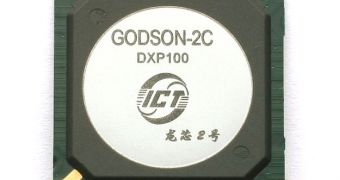In the second quarter of this year, Chinese scientists were expected to tape out the first version of the Loongson 2H microprocessor, but this process has now been delayed by several months for unspecified reasons.
This information was provided by Professor Yunji Chen from the Institute of Computing Technology of the Chinese Academy of Sciences to the SemiAccurate website, but he refrained from making any other comments regarding the reasons behind this delay.
Chen also hasn't provided an updated development schedule for the Loongson 2H and only mentioned that the tape-out process was delayed several months.
The Loongson 2H is the first Chinese-developed processor to use a system-on-a-chip design and it includes a single MIPS-based processing core, a graphics core, a memory controller as well all the usual southbridge functionality.
Just like the previous 2G revision of the chip, the Loongson 2H also uses a 4-way superscalar core with out-of-order execution and 64/64KB L1 cache as well as 512KB of Level 2 cache memory.
This enables it to run a variety of operating systems, but the chip will mainly be using the Chinese Red Flag Linux distribution.
The integrated GPU was licensed from Vivante, it should be able to accelerate 1080p video content playback and features a unified vertex and fragment/pixel shader architecture with full OpenGL ES 2.0 Shading Language support.
The chip is going to be manufactured using the 65nm fabrication process by ST Microelectronics.
Loongson (also known as Godson in the academic circles) is a high interest discussion topic in China, where the chip is expected to be used for all kinds of hardware, ranging from educational devices to military equipment.
Furthermore, Loongson processors are also expected to make their way into consumer devices such as notebooks. A prototype laptop powered by a Loongson processors was spotted at the end of June.

 14 DAY TRIAL //
14 DAY TRIAL //